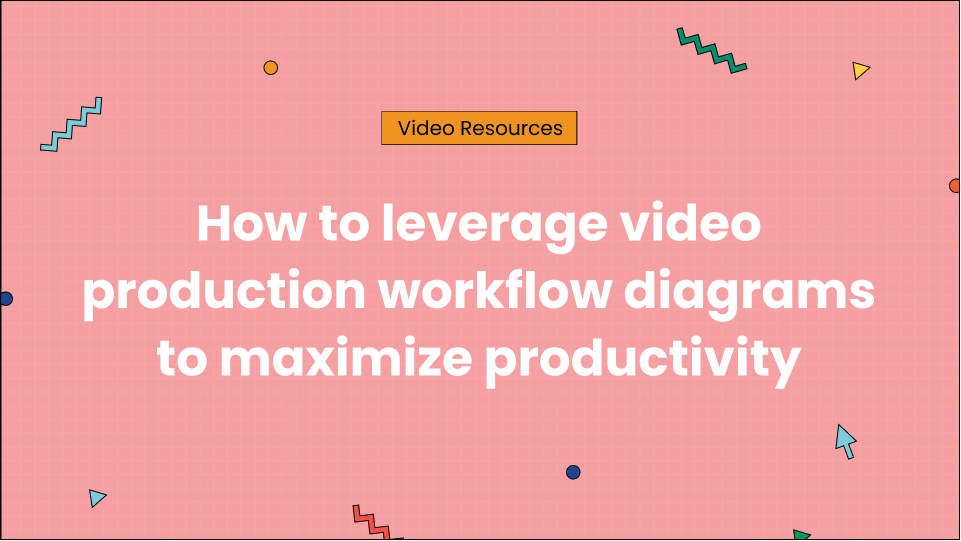What if I told you there’s a way to streamline your video production process, minimize the potential for errors, and maximize productivity?
Video production is a complex and intricate process that requires the coordination of multiple teams, tasks, and deadlines. It’s easy to get bogged down by the details and lose sight of the bigger picture.
Enter video production workflow diagrams.
This simple strategy can help you keep track of your progress, organize your tasks, and keep your team on the same page.
In this article, I’ll dive deeply into how you can leverage video production workflow diagrams to achieve your goals and achieve the desired results.
So get ready to take your video production process to the next level!
Table of Contents
What is a production workflow for creative teams?
A production workflow for creative teams is a process that creative professionals follow to produce high-quality content such as videos, animations, graphics, or other creative work. This workflow involves a series of steps that ensure that the final product meets the client’s or organization’s needs and the team’s creative vision.
To be more precise, a video production workflow is the step-by-step process used to create a video, from the initial concept to the final product.
The workflow typically includes pre-production, production, and post-production phases, each with its tasks, timelines, and deliverables.
Seasoned professionals have a well-defined and documented video production workflow that can help their teams stay organized and on track throughout the production process. It can also help minimize the potential for errors, miscommunications, and missed deadlines, leading to more successful video production.
Well, these benefits are only the tip of the iceberg. There’s more you should know!
Why do you need video production workflow diagrams?
An estimated 3.5 Billion audience will be watching video content in 2023. Marketers, YouTubers, Steamers, and Filmmakers know how rapidly the industry is growing. And yes, they have the best video production workflows tailored to their teams.
That’s one reason you need a video production workflow ASAP. To stay in the race. So if you think video production without a plan still works fine, trust us, it doesn’t.
Not as long as you’re facing difficulties keeping edits in check, having all team members on the same page, and delivering projects before deadlines.
If that sounds like your workflow, there are enough reasons to start crafting a strategized video production workflow diagram.
Some other reasons why you need it are the benefits, which include:
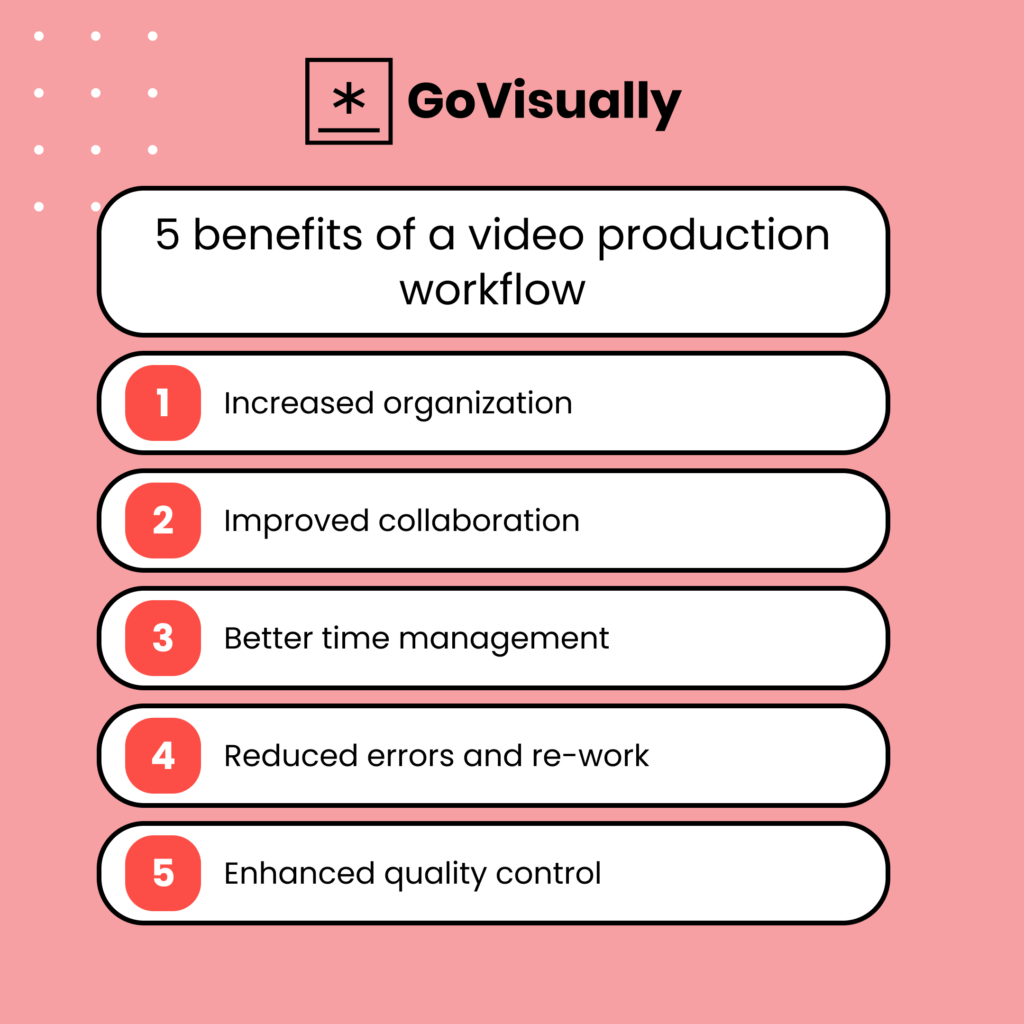
1. Increased organization
A well-defined video production workflow provides structure and organization to the entire production process, helping teams better understand the steps involved and what is expected of them.
2. Improved collaboration
Knowing every step and process helps to facilitate better communication and collaboration between team members, ensuring that everyone is working towards the same goal.
3. Reduced errors and re-work
By establishing clear processes and guidelines, a video production workflow helps to minimize the risk of mistakes. It reduces the need for rework, leading to a more efficient and cost-effective production process.
4. Better time management
Your teams learn to manage their time effectively by providing a clear timeline and breaking down complex projects into manageable tasks planned right off the bat.
5. Enhanced quality control
With clear processes in place, it’s easier to maintain quality standards and catch potential errors before they become bigger problems. This can lead to higher-quality final products and a better overall experience for the viewer.
Video production process flow chart – the 4 stages
The four stages of a typical video production workflow are:
Stage 1: Pre-production
The pre-production stage of a video production workflow diagram involves several key steps that help to set the foundation for a successful final product.
These steps include:
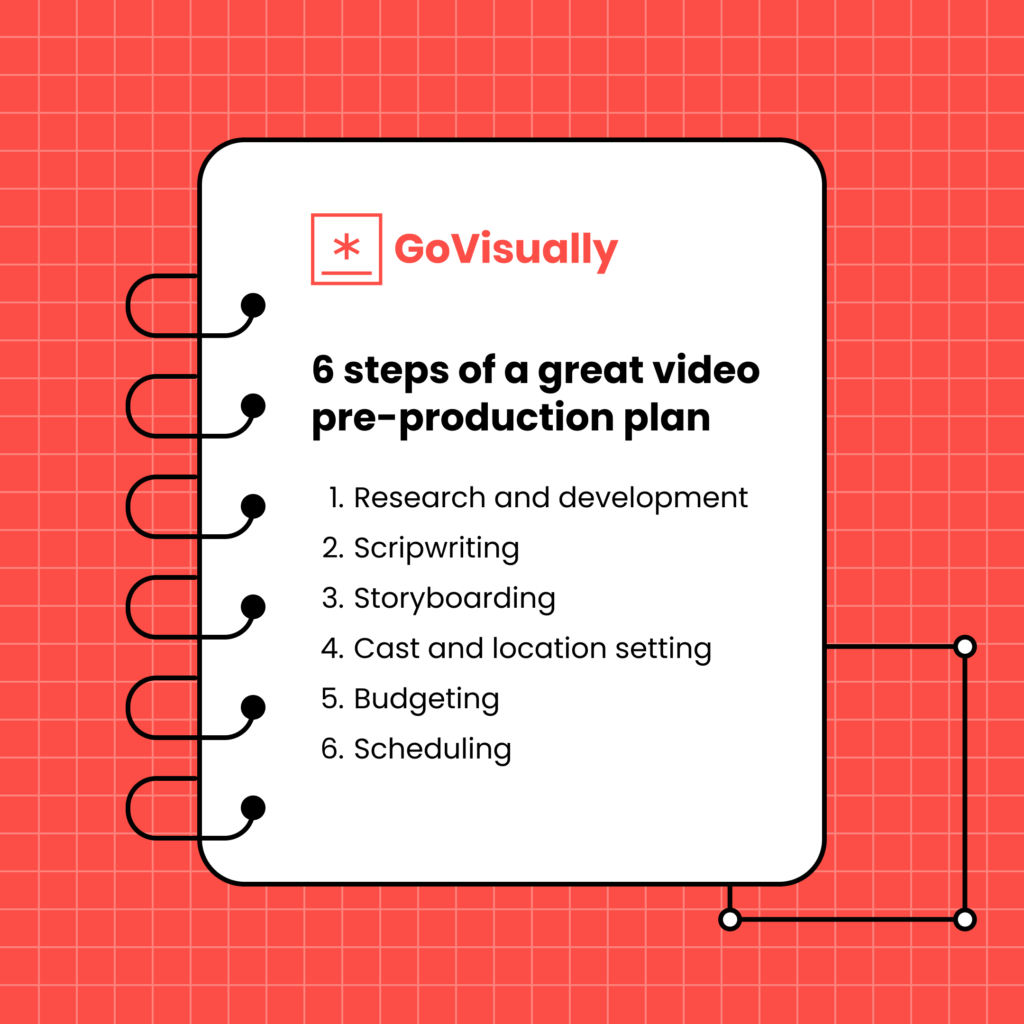
- Research and development: Research the subject matter and develop ideas for the video. This may involve gathering information from various sources, such as books, articles, websites, and experts in the field.
- Scriptwriting: Write a script that communicates the story and message of the video. This script will serve as the blueprint for the entire video production process.
- Storyboarding: Create a visual representation of the script using storyboards. Storyboards help to visualize the shots and transitions that will be used in the final video.
- Cast and location selection: Select actors and choose locations that will bring the script to life. Consider factors such as the actors’ availability, the look and feel of the locations, and the logistics of filming in those locations.
- Budgeting: Develop a budget for the project, taking into account all of the costs involved in the video production process, such as equipment rental, crew salaries, travel expenses, and post-production costs.
- Scheduling: Create a schedule for the production that takes into account all of the various stages of the video production process, including pre-production, production, review, and post-production.
Stage 2: Production
The production stage of a video production workflow diagram is where the footage is captured and recorded.
This stage typically involves the following steps:
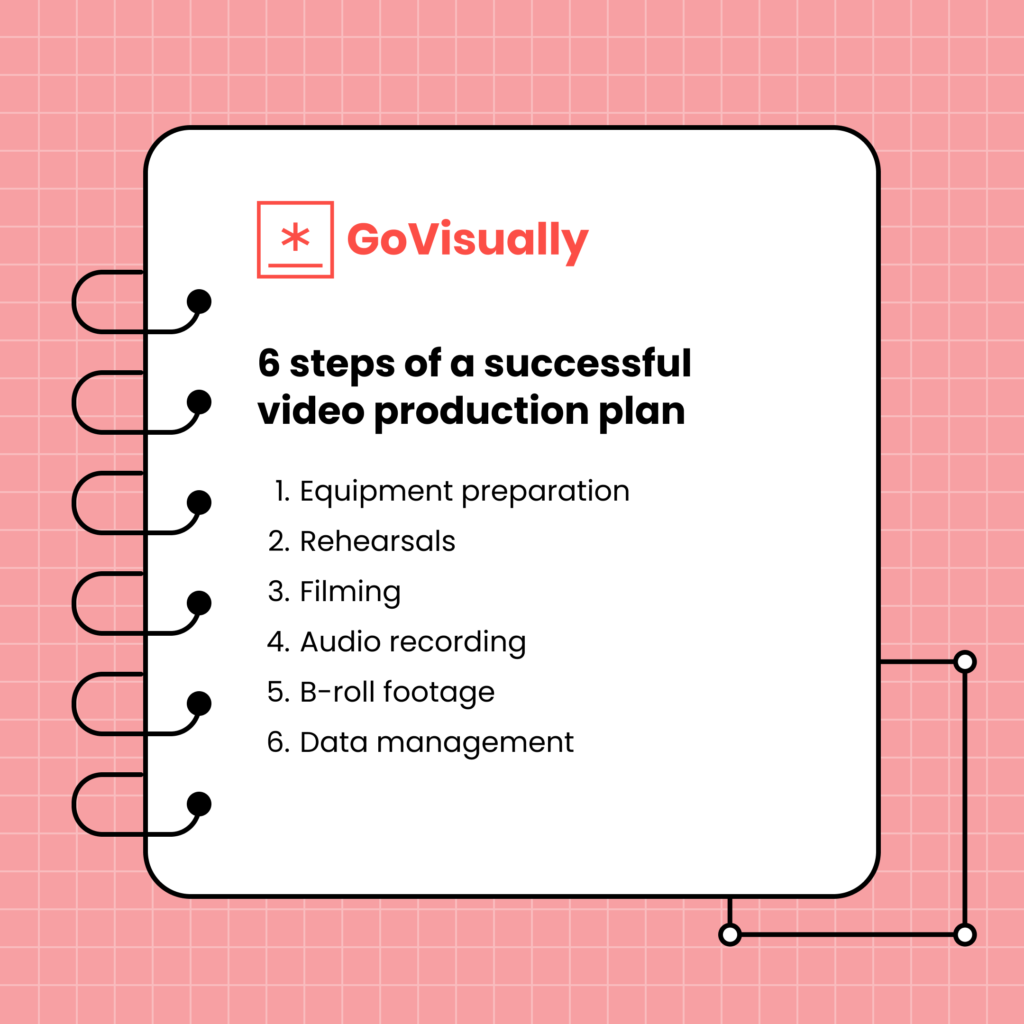
- Equipment preparation: Set up and test all of the equipment that will be used during the shoot, including cameras, lighting, and sound recording equipment.
- Rehearsals: Rehearse the scenes to be filmed, ensuring that the actors and crew are familiar with the script and their roles.
- Filming: Begin filming the scenes, capturing the footage needed to tell the story. Pay close attention to lighting, sound, and camera angles to ensure that the footage is of the highest quality.
- Audio recording: Record separate audio tracks for each scene, including dialogue, sound effects, and background music.
- B-roll footage: Capture B-roll footage that can add visual interest and provide context for the story.
- Data management: Properly manage and store the footage captured during the shoot, ensuring that it is organized and backed up.
Stage 3: Post-production
You’ll need a fast post-production stage in your video production workflow where the raw footage captured during the production stage is edited and refined into a final product. This stage is crucial since it requires intense collaboration within and outside teams.
It typically involves the following steps:
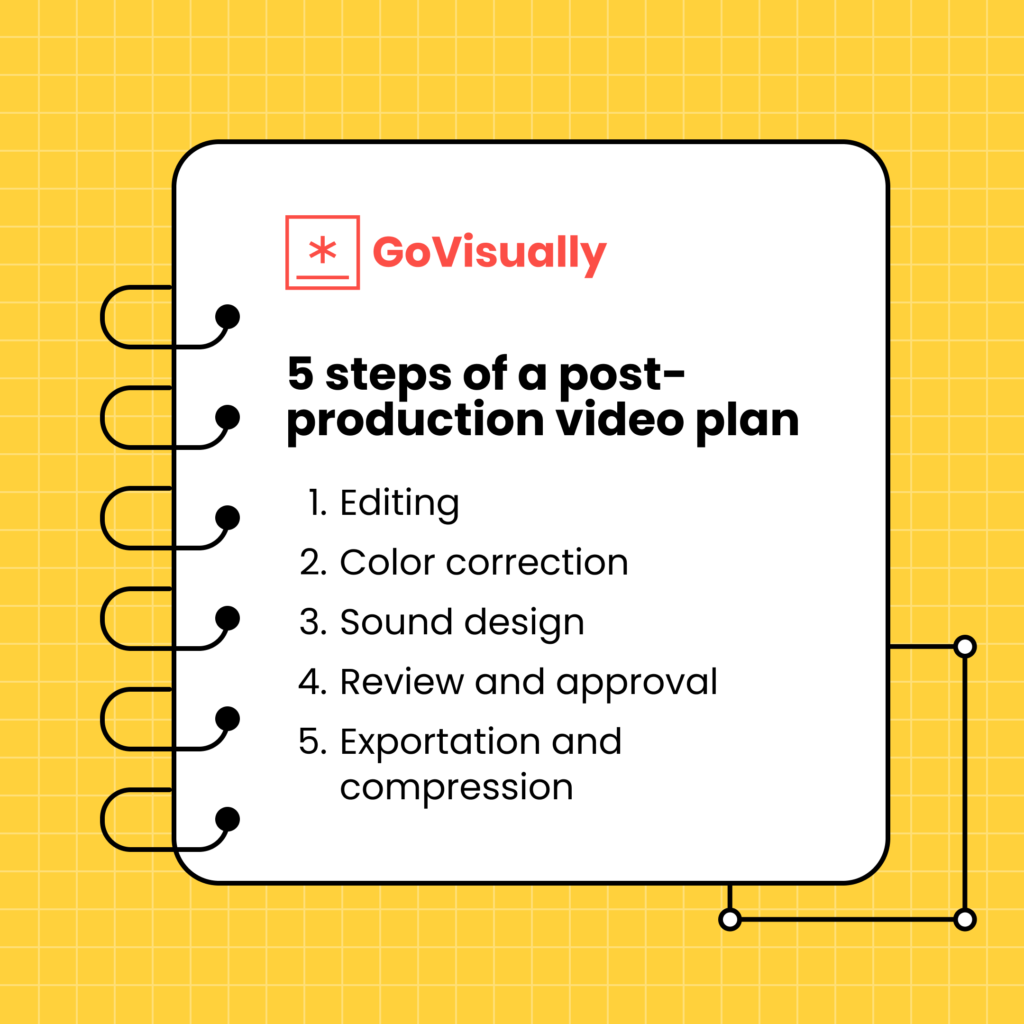
- Editing: Import the raw footage into editing software and begin assembling the footage into a cohesive story. This may involve trimming shots, adding special effects, and incorporating audio tracks.
- Color correction: Adjust the color balance and saturation of the footage to ensure it looks as good as possible.
- Sound design: Add sound effects and background music to enhance the story and create a more immersive experience for the viewer.
- Review and approval: Review the rough cut of the video and make any necessary changes. Once the final edit has been approved, the video is ready for distribution.
- Exportation and compression: Export the final video in the desired format, compressing the file so it can be easily shared or uploaded.
Stage 4: Distribution and promotion
A production workflow flowchart’s distribution and promotion stage are where the final video is shared with the target audience, and efforts are made to increase its visibility and reach.
This stage typically involves the following steps:
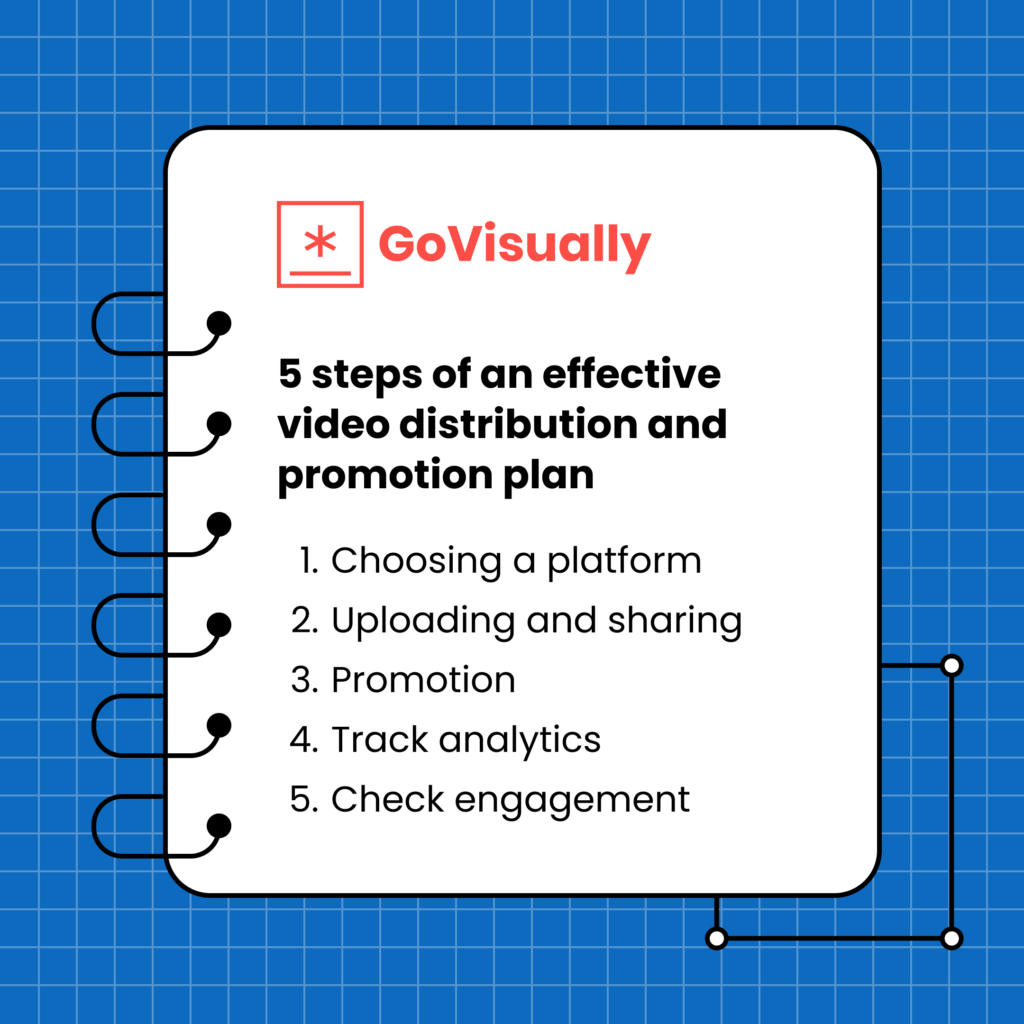
- Choosing a platform: Decide on the best platform or platforms to share the video, such as a video hosting site, social media, or a company website.
- Uploading and sharing: Upload the video to the chosen platform and share it with the target audience. Use descriptive and relevant keywords and tags to help users easily discover the video.
- Promotion: Promote the video through a variety of channels, such as email marketing, paid to advertise, and social media. This will help increase the video’s visibility and reach a larger audience.
- Analytics: Track and analyze the performance of the video using tools such as Google Analytics and social media analytics. This will help to understand the effectiveness of the promotion efforts and make any necessary adjustments.
- Engagement: Encourage and facilitate engagement with the video, such as comments, shares, and likes. This will help increase the video’s reach and generate further interest.
It is important to note that these stages do not have to be linear in your diagram/ flowchart and can overlap or run parallel. Still, a tailored video production workflow diagram helps to ensure that each stage is completed effectively and efficiently.
Production workflow examples for inspiration
Building a workflow diagram to fit your team’s work is quite simple. A flowchart and the right stages you implement as video-makers would be best.
Still, if you’re lost on where to get started, here are some great videography workflow diagram examples.

The 8-step guide on how to create video production workflow diagrams
Now that you know everything about a video workflow, the stages you need to add to your flowchart, and some inspiration to get started, here’s how you can create a tailored video production workflow diagram for your team in 8 steps!
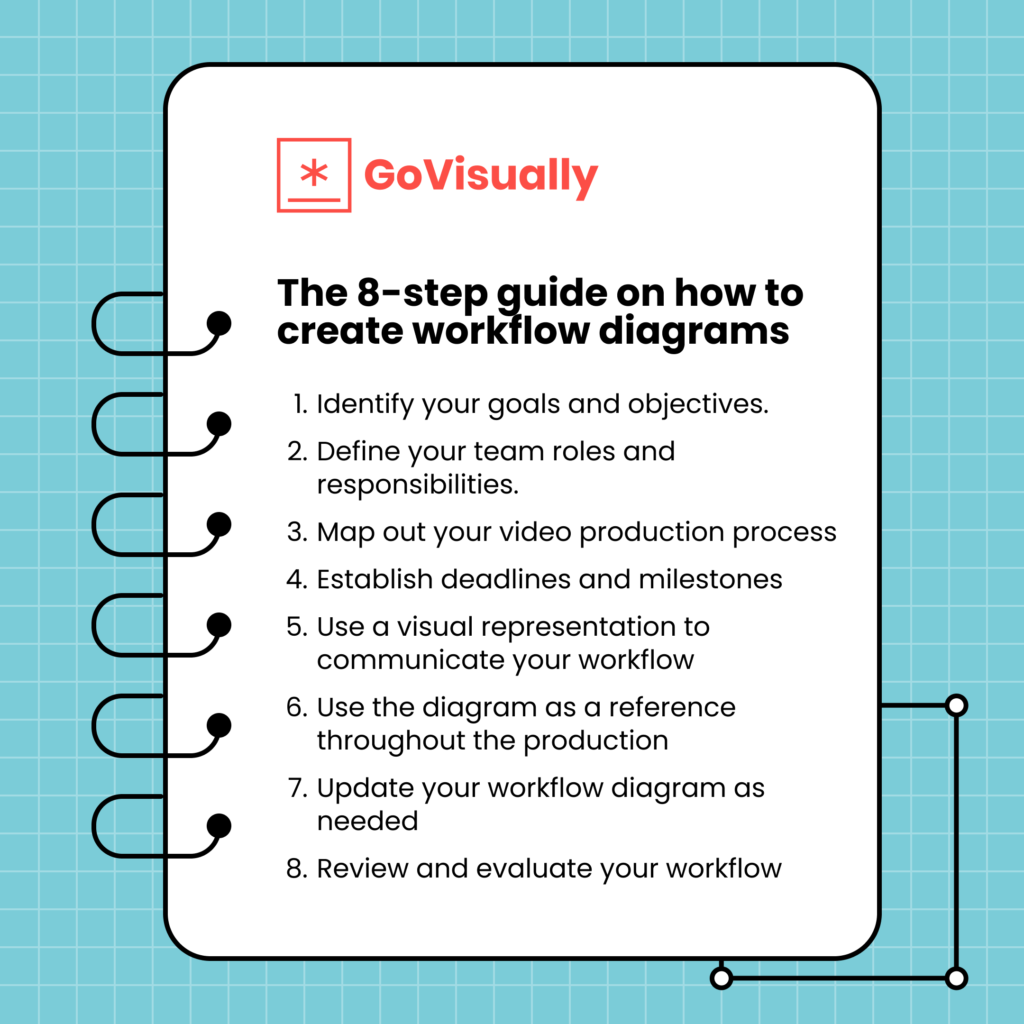
1. Identify your goals and objectives.
Before you start creating your video production workflow diagram, it’s important to determine your goals and objectives. This will help you focus on what’s most important and ensure that you don’t waste time and resources on tasks that are not essential to your production.
Consider what you want to achieve with your video, who your target audience is, and what message you want to convey.
2. Define your team roles and responsibilities.
Once you clearly understand your goals and objectives, the next step is to define your team roles and responsibilities. Ensure that everyone knows what they’re responsible for and what is expected.
You’ll need to determine who will be responsible for pre-production, production, and post-production tasks and assign specific tasks to each team member.
3. Map out your video production process
With your goals and objectives in mind, it’s time to map your video production process.
You can take 4 stages of the process as a starting line.
Start by breaking down the production into smaller, manageable steps, such as scripting, storyboarding, and filming. You should also consider any potential roadblocks or challenges and plan how you and your team will overcome them.
4. Establish deadlines and milestones
With your video production process mapped out, it’s time to establish deadlines and milestones. It will help you track your progress and ensure that you’re on track to meet your goals.
Project management software can help you assign these deadlines and milestones in real-time. Consider the time your team may have to complete each task and factor in any delays or unexpected challenges that may arise.
5. Use a visual representation to communicate your workflow
Once you have established your deadlines and milestones, use a visual representation to communicate your workflow. Make a graphic for your video production workflow diagram.
It can be as simple or complex as you need it to be, but it should communicate your process and the roles and responsibilities of each team member.
You can use software such as Visio, Omnigraffle, or Lucidchart to help you choose the best visual templates and save time in designing.
6. Use the diagram as a reference throughout the production
With your video production workflow diagram in place, use it as a reference throughout the production. This will help you stay organized and on track and ensure that everyone on your team knows what is expected of them.
Use your diagram to track progress and update it as needed to ensure that you meet your deadlines and milestones.
7. Update your workflow diagram as needed
As your production progresses, you may encounter changes or updates to your workflow. It’s important to keep your diagram up-to-date so that everyone on your team is aware of any changes.
Regularly review and update your diagram as needed, and ensure that everyone on your team has access to the most recent version.
8. Review and evaluate your workflow
Finally, once your production is complete, it’s important to review and evaluate your workflow. Consider what worked well, what didn’t, and what you would do differently next time.
Use this information to improve your workflow and your video production workflow diagram to streamline your processes and maximize productivity in your next production!
GoVisually – the leading video review and approval software
Video production is a complex and multi-faceted process that requires a well-defined workflow to be successful. So you’ll need an equally powerful platform to make your ideal workflow a reality.
GoVisually is a leading video production workflow software that provides a comprehensive solution for managing your entire video production process, from pre-production to distribution and marketing.
The platform offers more than video workflow automation. At its core, GoVisually is the perfect video proofing, collaboration, and project management platform.
With advanced features to edit, review, and approve videos, collaborate with your team, get client buy-in at different stages of your workflow, and manage projects, assets, and teamwork, you have everything you need for the perfect workflow in one place.
Sign up today and see the difference that a streamlined workflow can make for your next video project.
Let’s set the perfect flow and take your video production to the next level!
